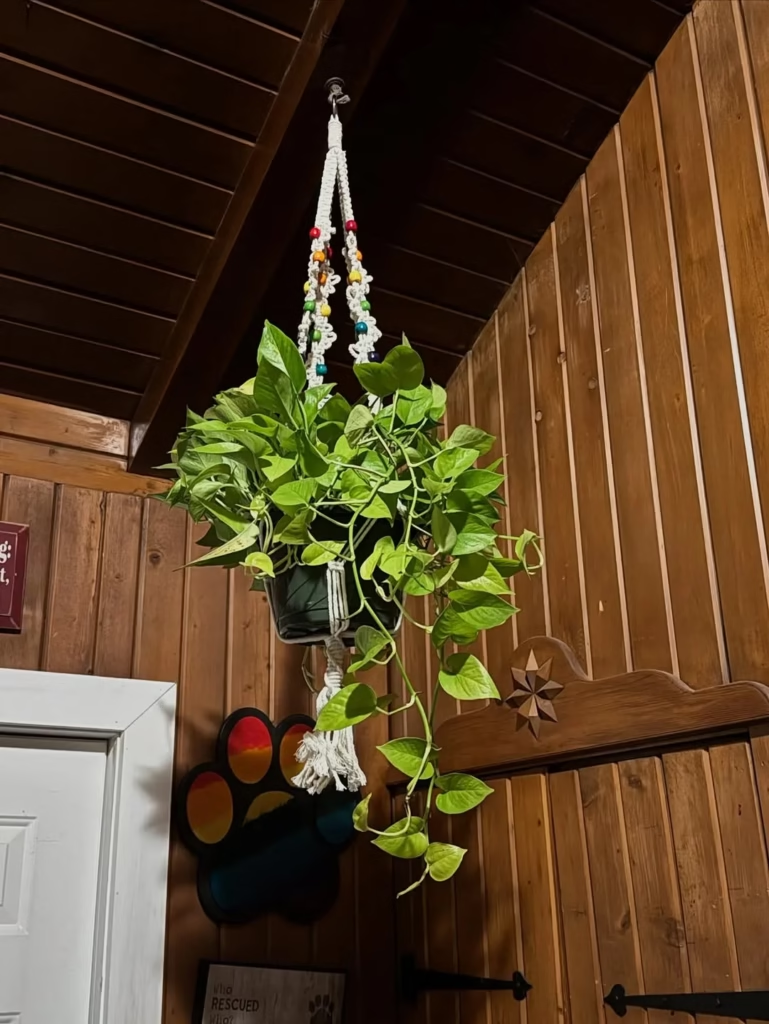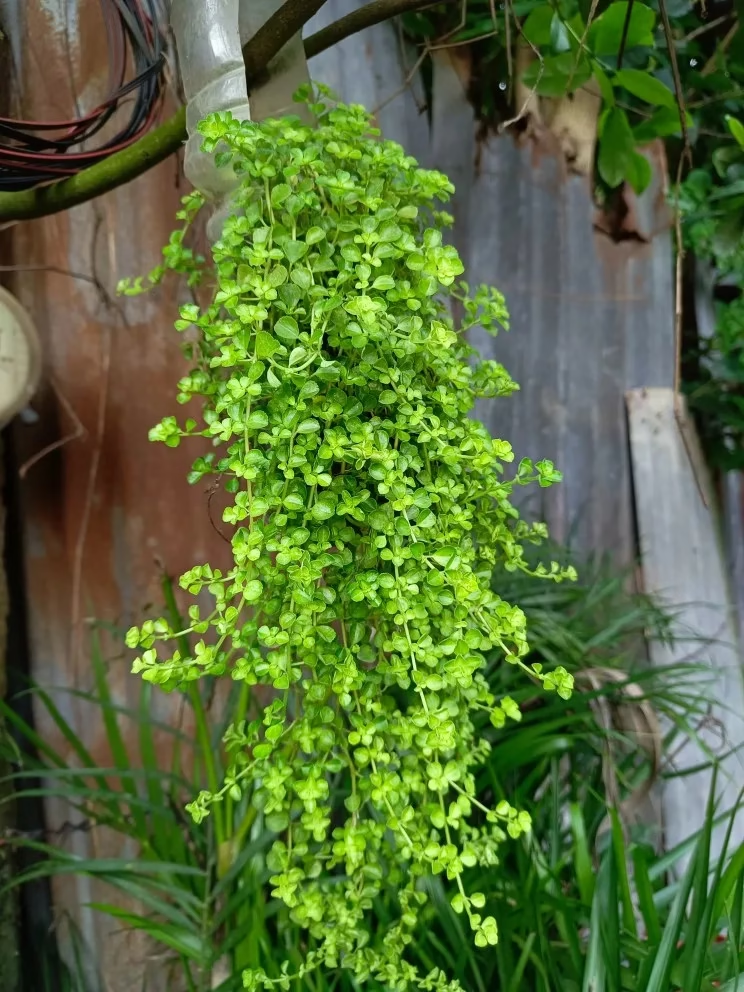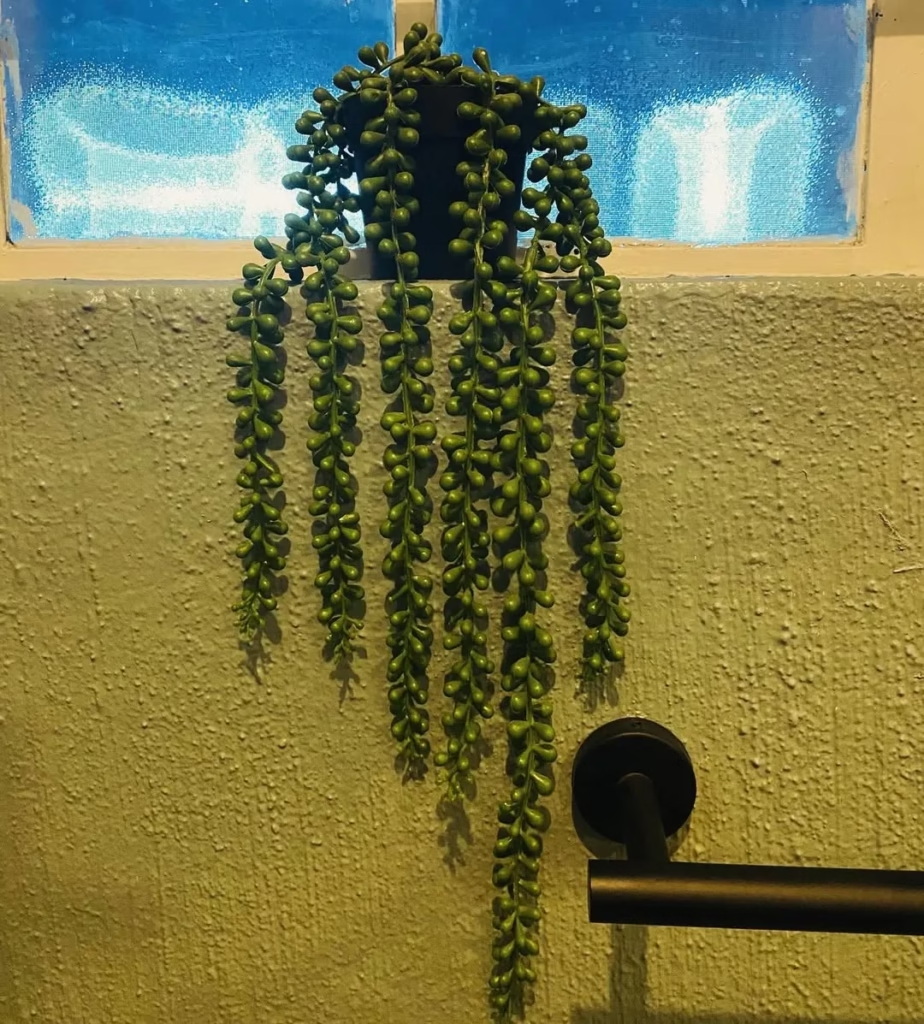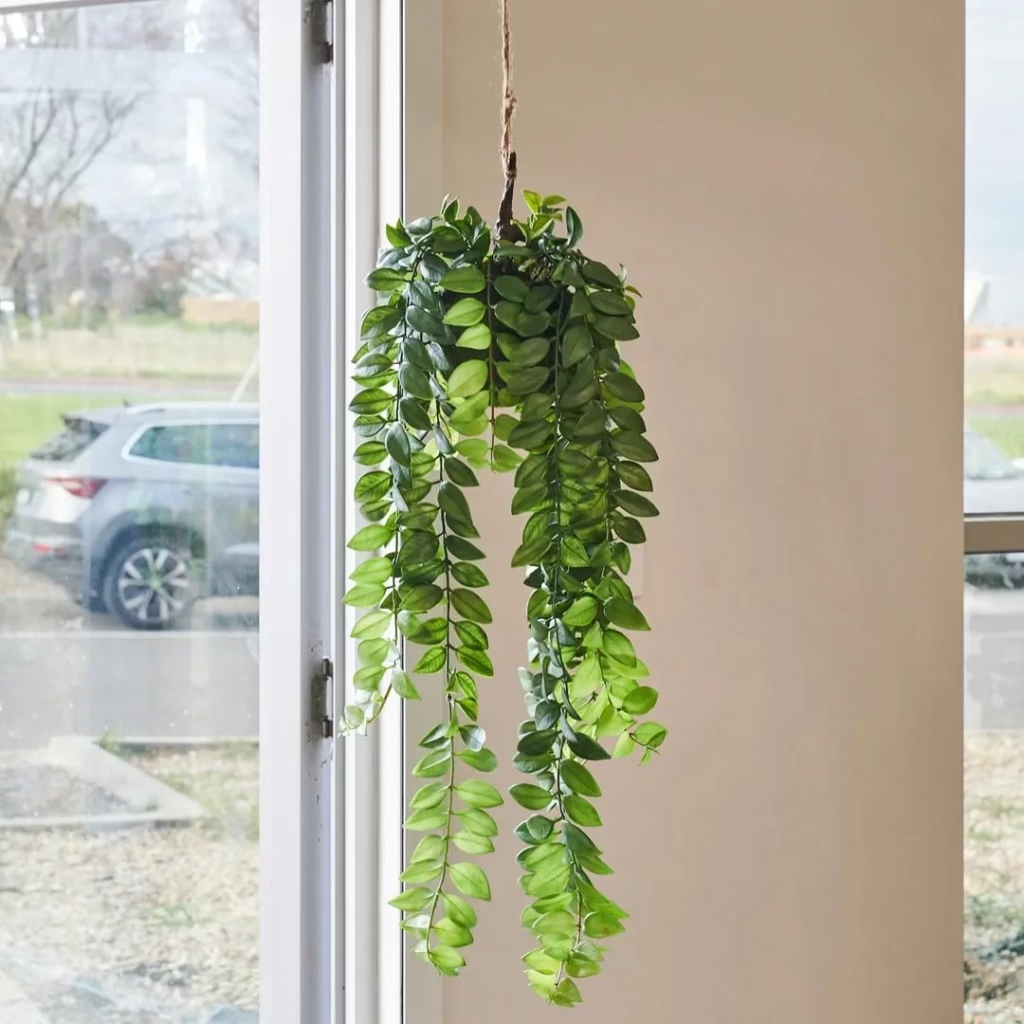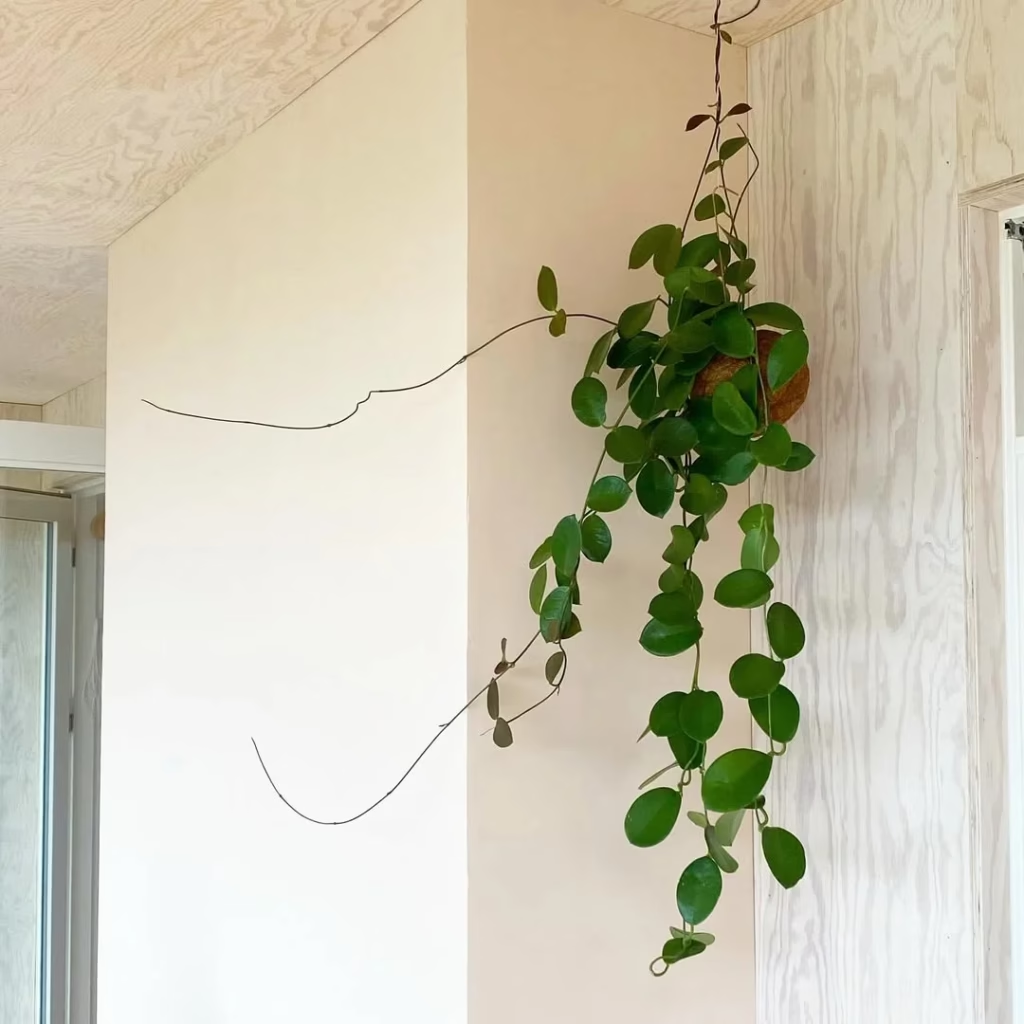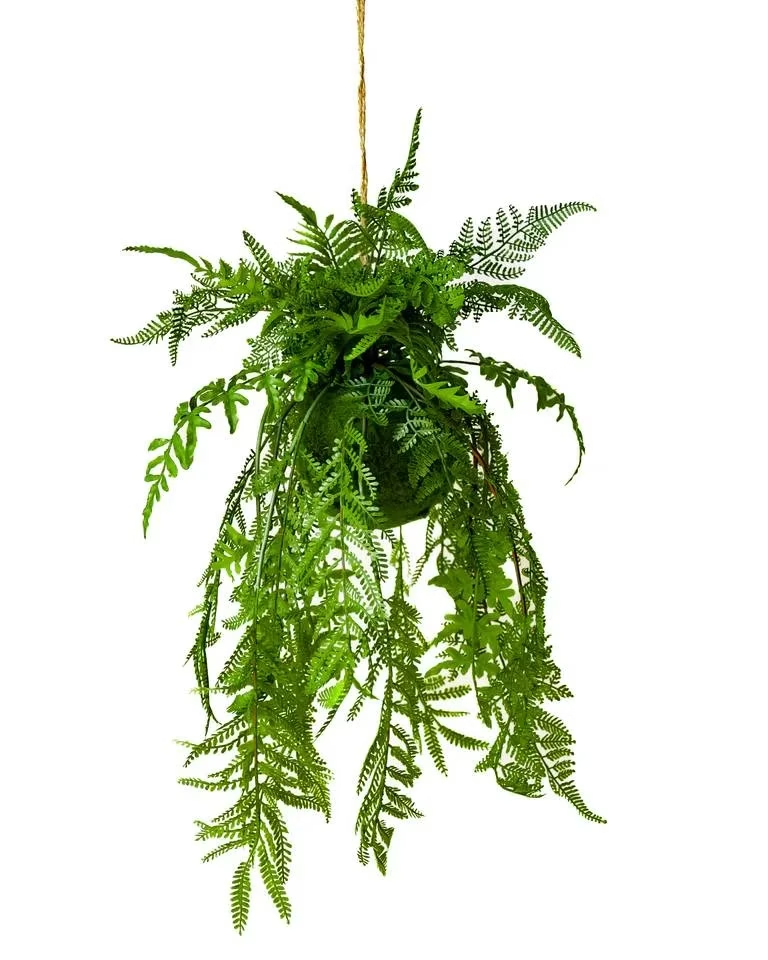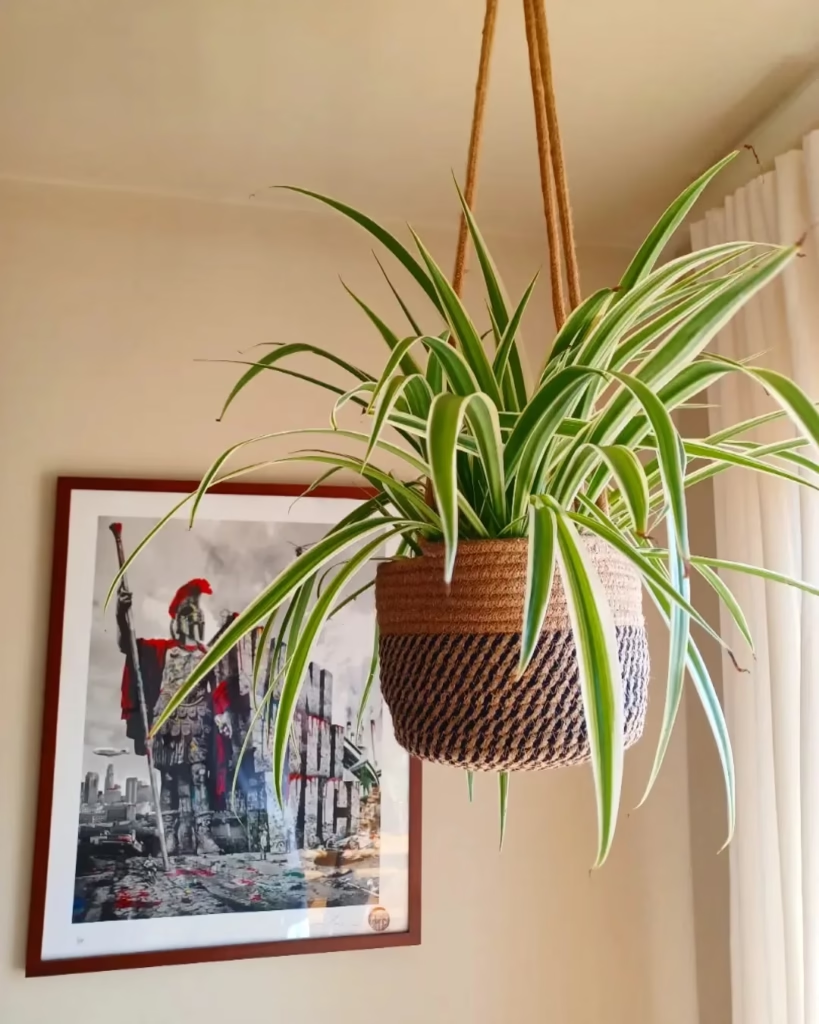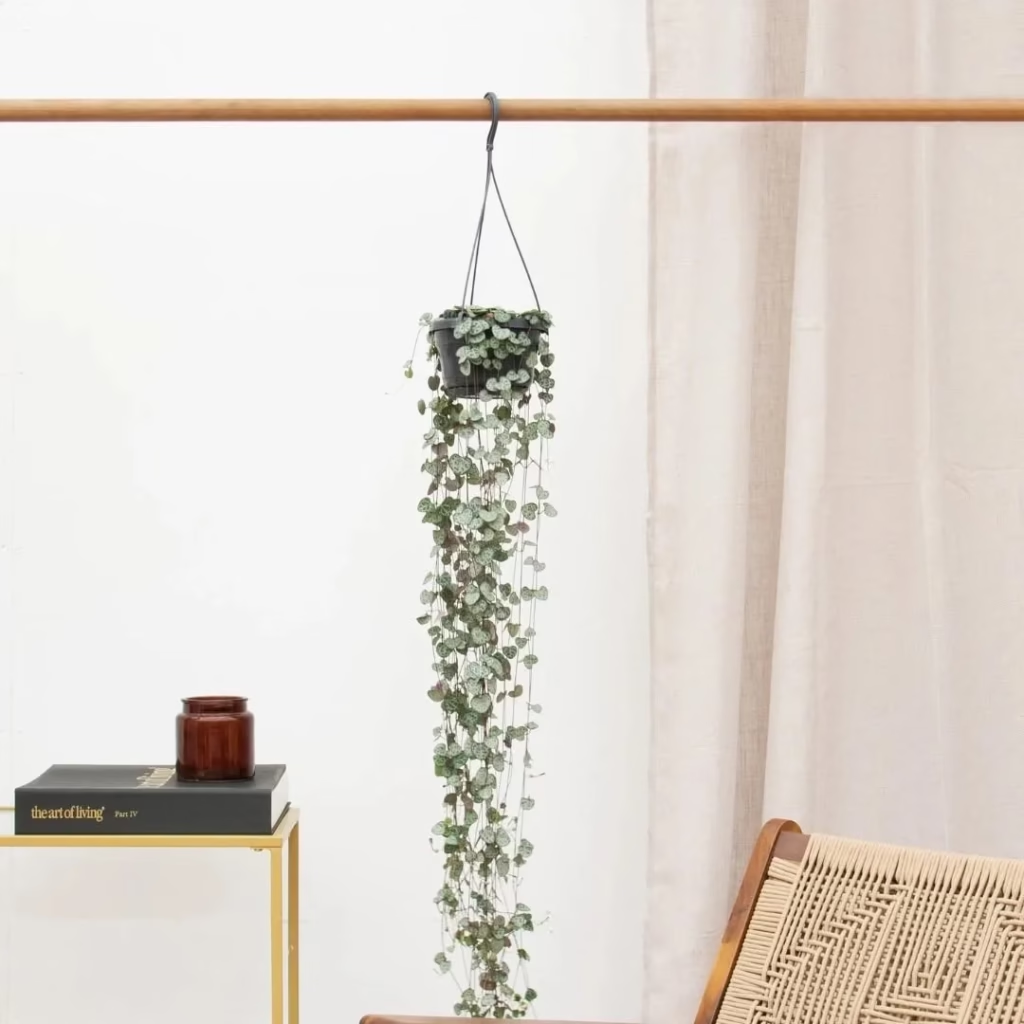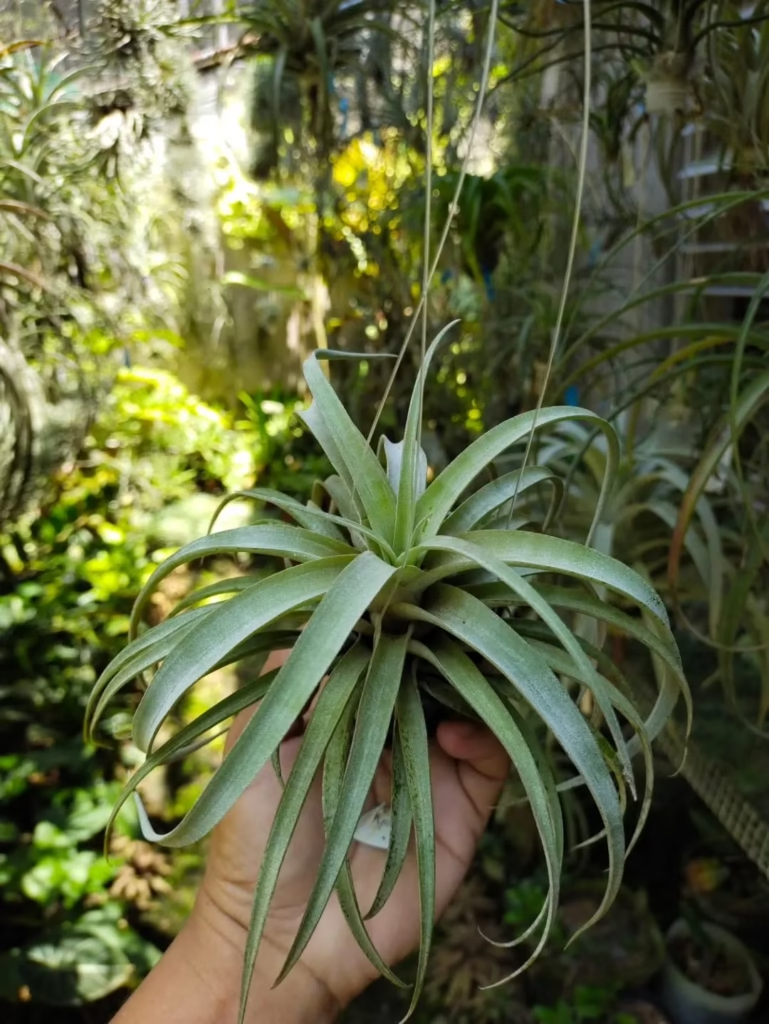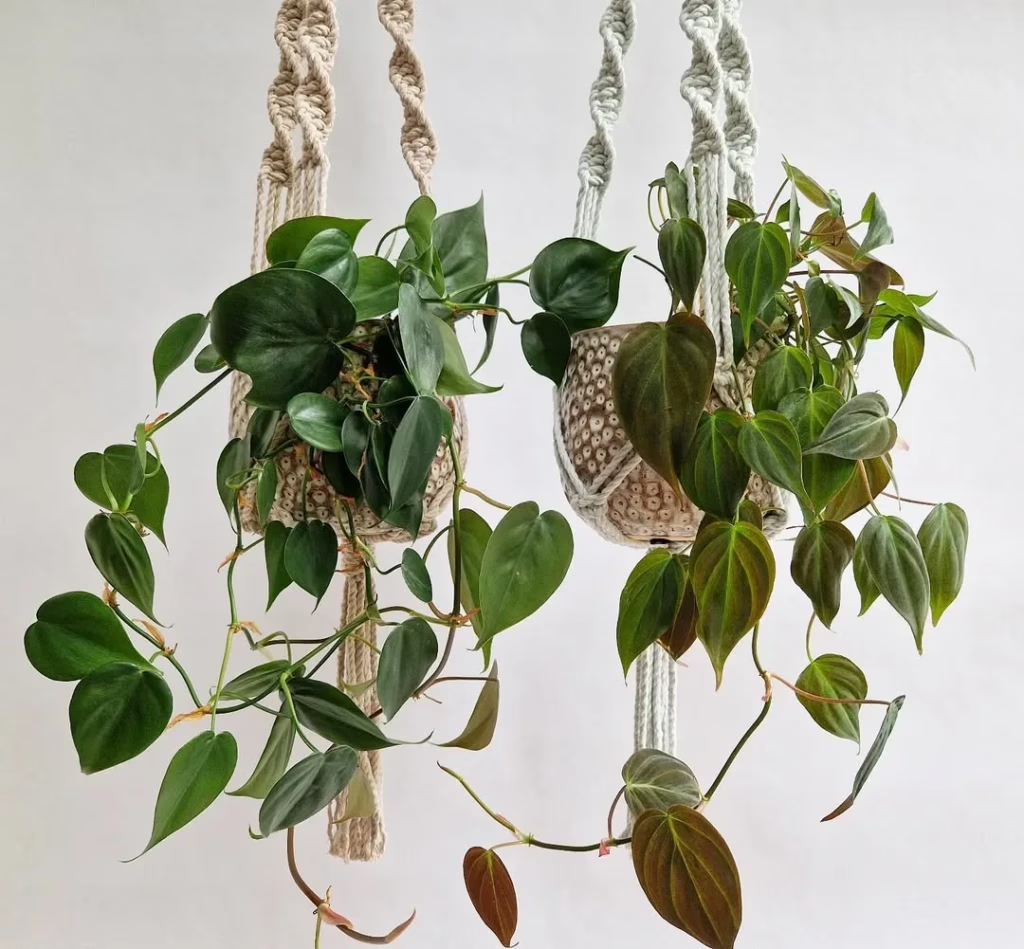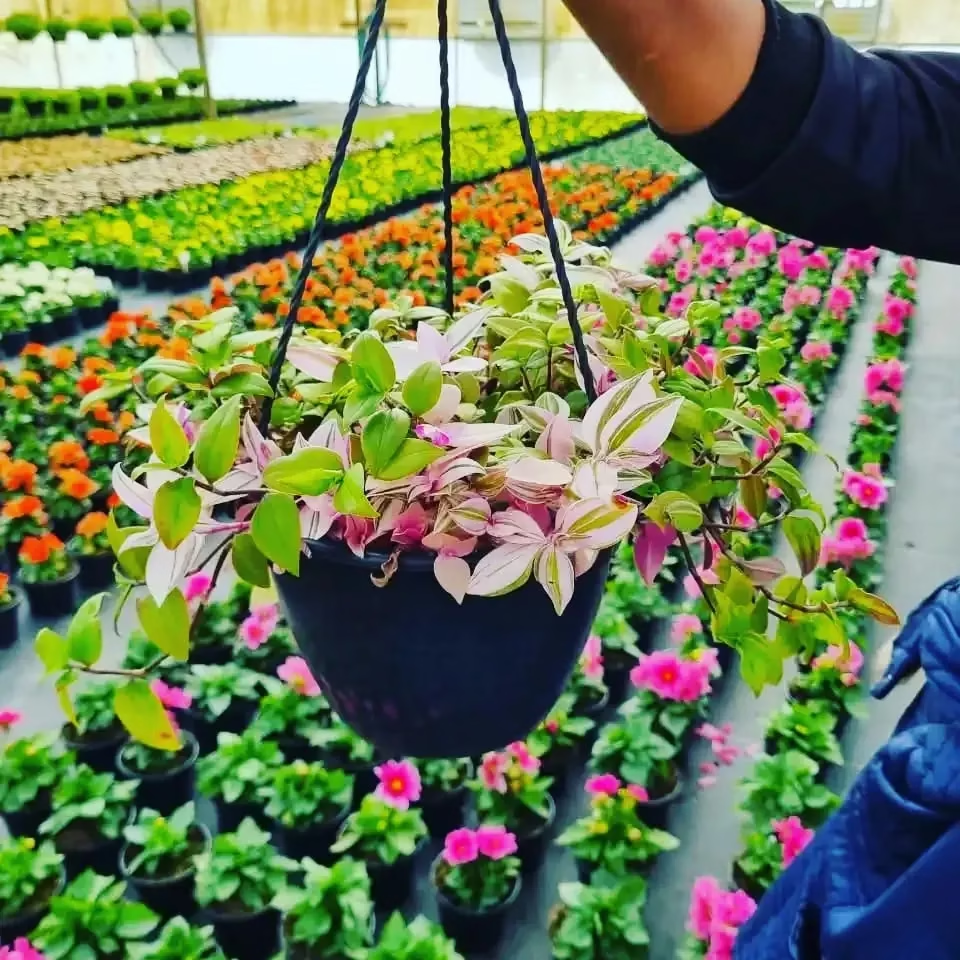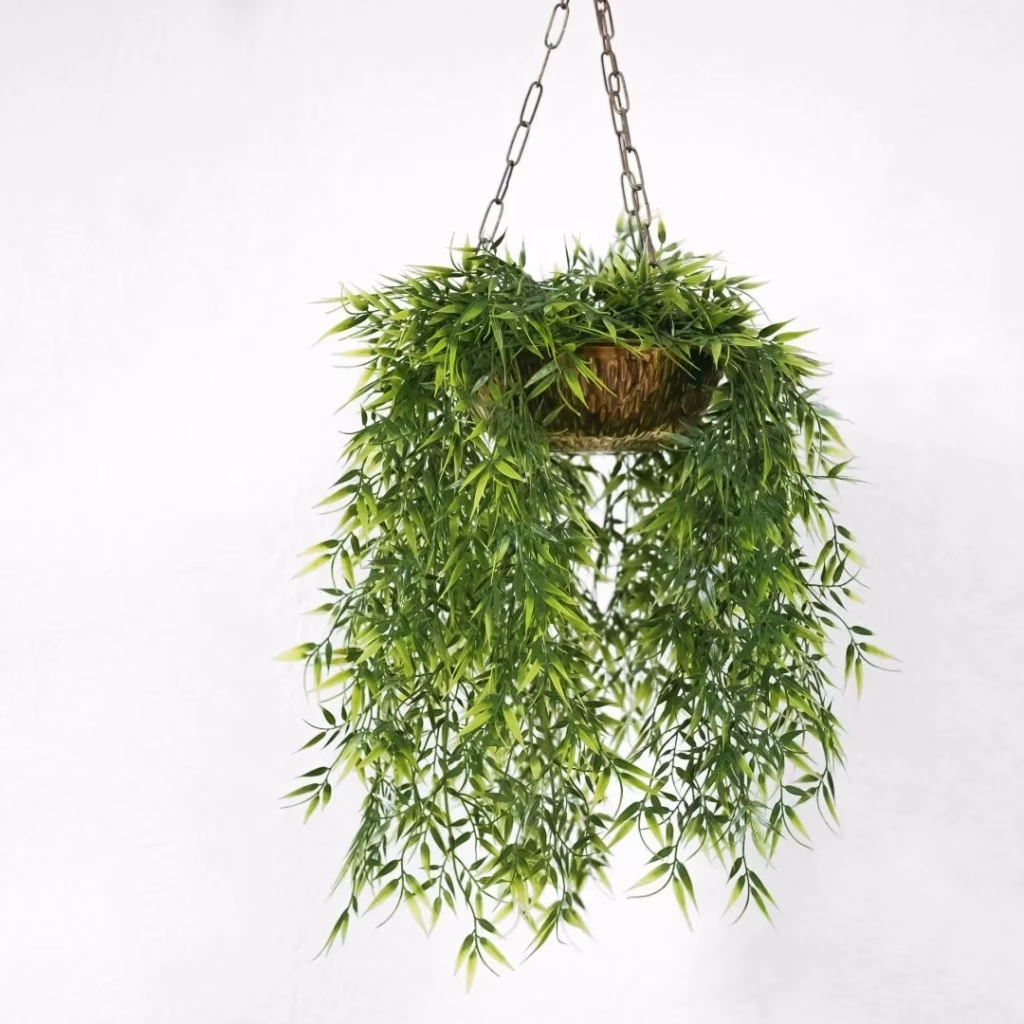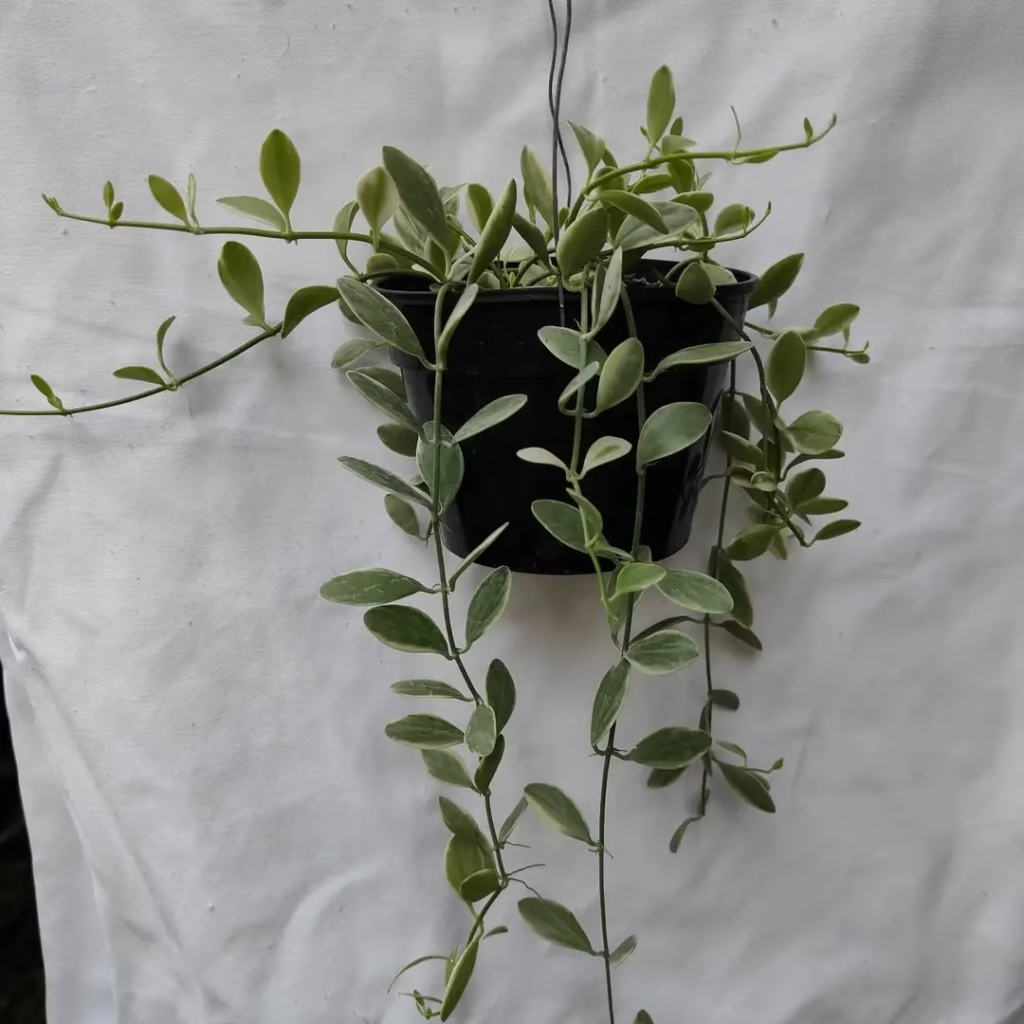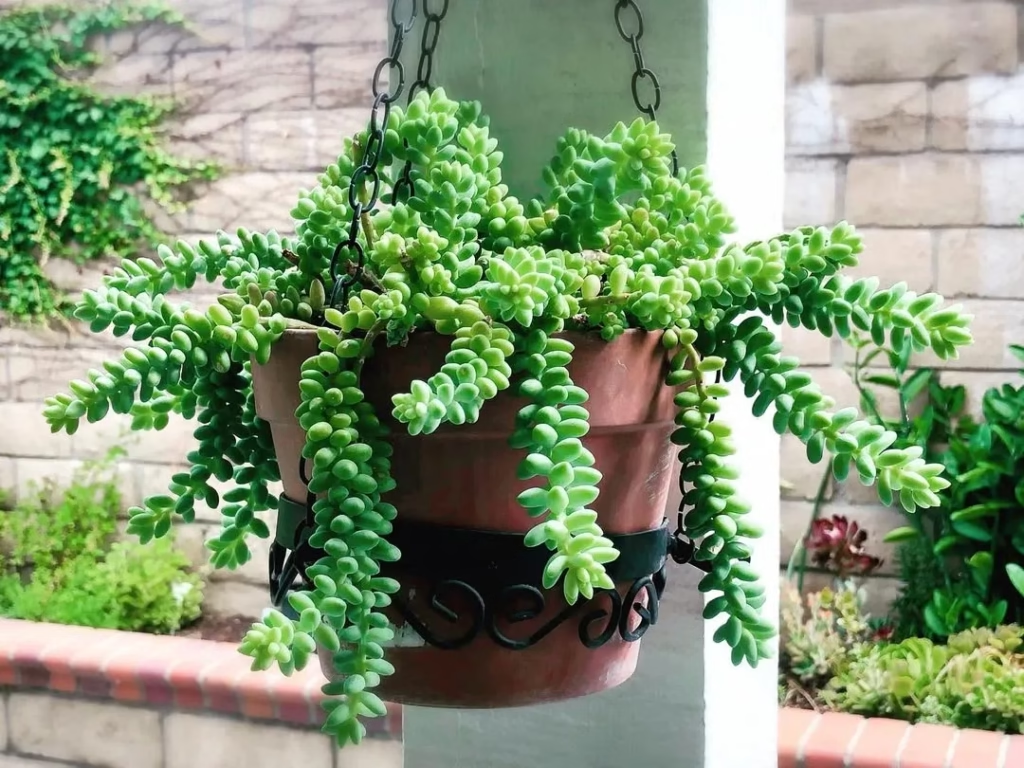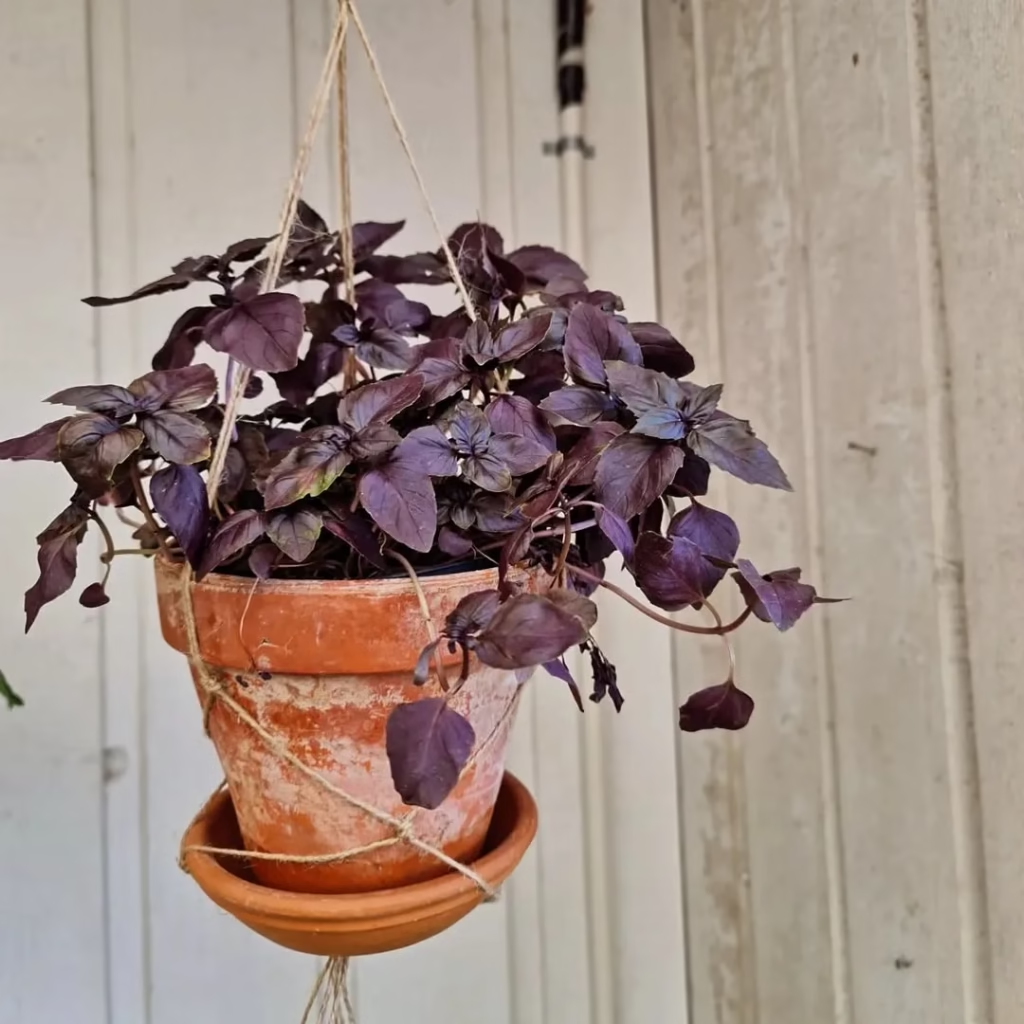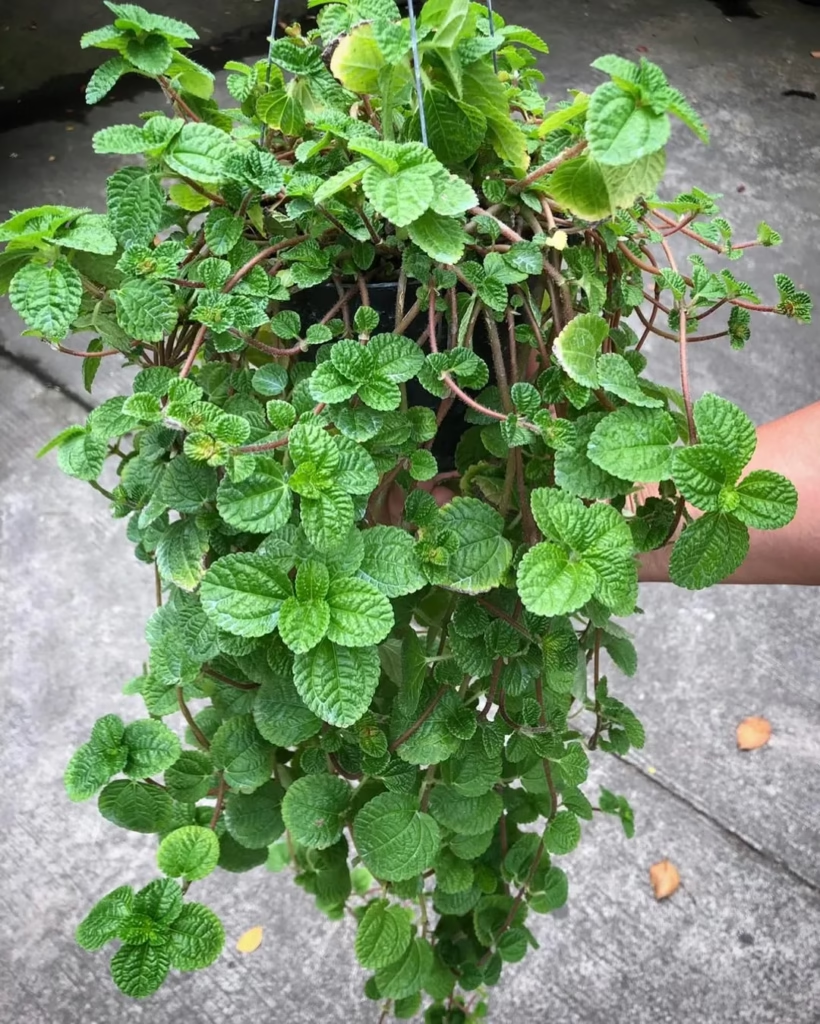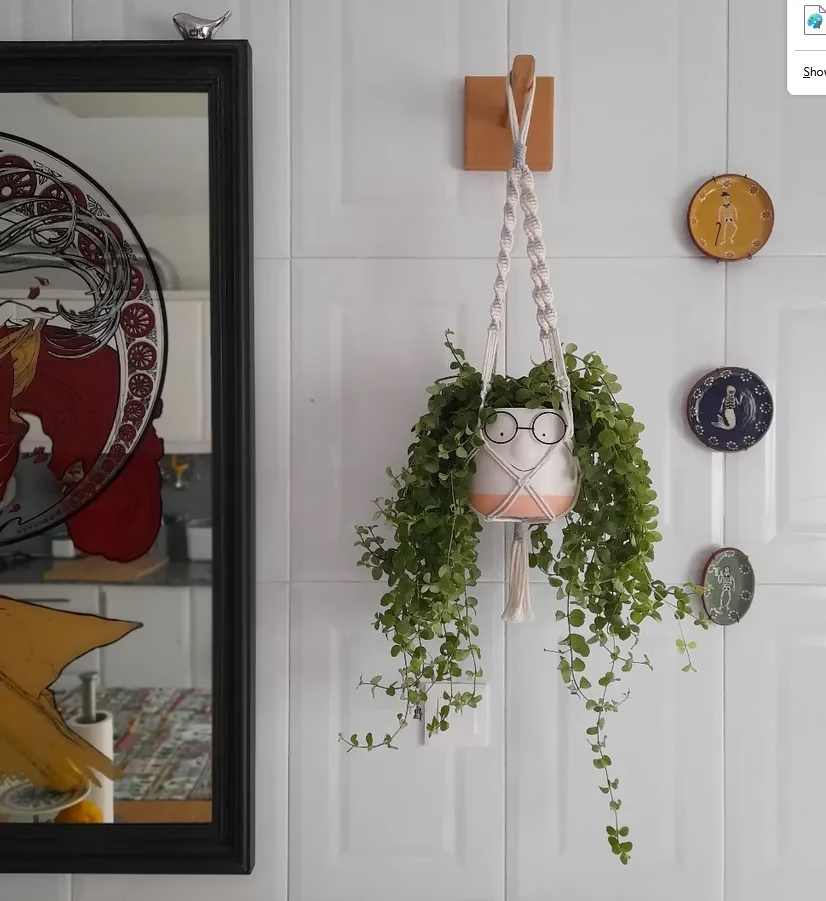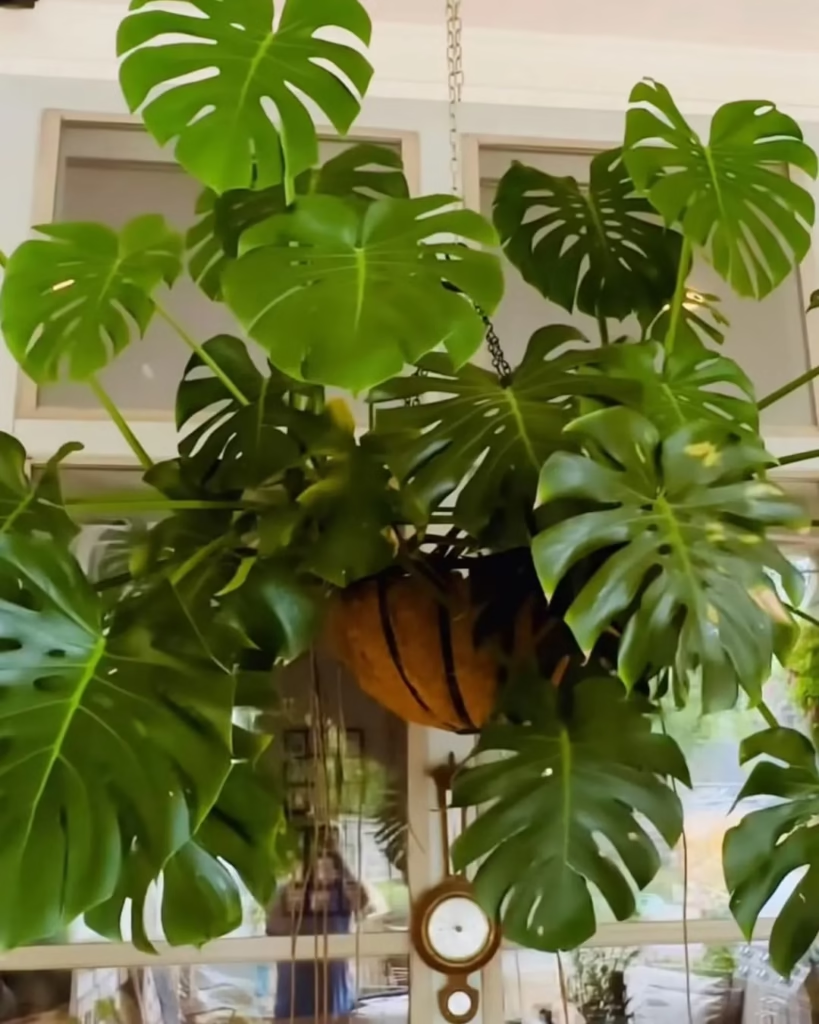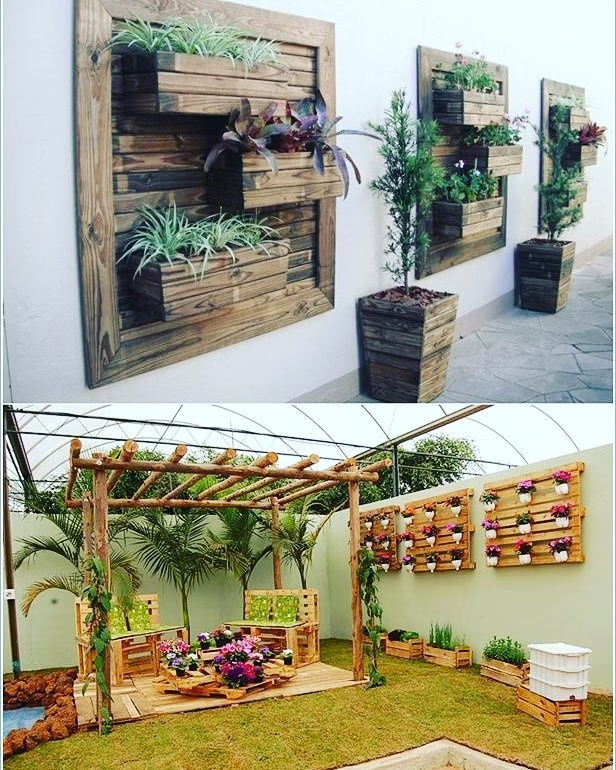Lush greenery has the ability to transform any living area into a serene oasis, and incorporating hanging plants is an excellent method to introduce that element of nature into your residence. These inventive hanging plant concepts not only elevate the visual appeal of your interiors but also contribute to air purification and enhance your mood. One creative option is to utilize macrame plant hangers. These artisanal holders infuse a bohemian touch into your decor while elegantly displaying your plants. You can suspend them from ceiling hooks or a robust branch to establish a natural, forest-like ambiance. For a more contemporary aesthetic, consider sleek, geometric metal hangers that can be hung from the ceiling or affixed to the wall. Another suggestion is to establish a vertical garden with a hanging plant wall. This can be accomplished by securing small pots or planters to a wooden or metal framework. This approach not only conserves floor space but also creates a striking visual impact. You can combine various types of plants, such as ferns, pothos, and spider plants, to introduce diversity and texture. For those with limited ceiling height, a hanging plant ladder is a viable option. This involves leaning a ladder against a wall and draping hanging plants over its rungs. This arrangement produces a cascading effect that is both functional and decorative. Additionally, a tension rod can be employed to suspend plants in a window, ensuring they receive sufficient sunlight. Lastly, consider repurposing common items like baskets, teacups, or even old light fixtures to craft distinctive hanging plant displays. These unconventional containers can infuse a sense of whimsy and character into your space. With these imaginative ideas, you can incorporate the beauty of lush greenery into your home in a manner that showcases your individual style.
Green Faux Hanging Plants
Green faux hanging plants provide an excellent and low-maintenance method to introduce the beauty of nature into your home or office. These artificial plants deliver the lush, vibrant appearance of real greenery without the necessity for watering, pruning, or concerns about sunlight. They are ideal for individuals who appreciate the aesthetic of plants but do not have the time or the skills to care for live ones.
One of the most attractive features of green faux hanging plants is their versatility. They can be utilized to enhance various spaces, including living rooms, bedrooms, kitchens, and bathrooms. Hanging them from the ceiling or a sturdy hook can create a sense of depth and visual interest, making your room feel more dynamic and inviting. They can also be employed to fill empty corners or to introduce a touch of greenery to a bare wall. Faux hanging plants are available in a wide array of styles and sizes, enabling you to find the perfect match for your space. From cascading vines such as pothos or ivy to more structured plants like ferns or philodendrons, there is a green faux hanging plant to complement any decor.
They can be used to establish a bohemian, jungle-like atmosphere or to infuse a touch of modern elegance into a minimalist setting. In addition to their aesthetic charm, green faux hanging plants are also remarkably practical. They are durable and long-lasting, making them a cost-effective alternative to real plants. They are also hypoallergenic, making them an excellent choice for individuals with allergies or sensitivities to pollen or mold. Whether you aim to add a touch of greenery to your home or office, green faux hanging plants represent a stylish and low-maintenance solution that can bring the beauty of nature indoors.
String Of Pearls
A string of pearls represents a timeless and sophisticated piece of jewelry that has been valued for centuries. These traditional necklaces are generally crafted from lustrous, round pearls that are threaded together on a silk cord, resulting in a smooth and refined appearance. The pearls can differ in size, hue, and quality, providing a diverse array of styles and price ranges.
One of the most attractive features of a string of pearls is its adaptability. It can complement a variety of outfits, from an elegant evening gown to a more relaxed blouse and jeans. The necklace can be layered with other jewelry items, such as a pendant or a chain, or worn by itself as a simple yet elegant statement piece. The length of the string can also differ, ranging from a short, choker-style necklace to a longer, more dramatic strand.
Pearls have historically been linked with elegance, sophistication, and refinement, making them a favored choice for significant events such as weddings, anniversaries, or graduations. They are frequently handed down through generations, evolving into treasured family heirlooms that carry sentimental value and memories. Beyond their visual allure, pearls are also thought to possess certain metaphysical attributes. They are believed to encourage purity, innocence, and wisdom, and are often connected with the moon and the water element. Some individuals assert that wearing pearls can aid in calming the mind and soothing emotions, making them a favored option for those in search of peace and tranquility. Whether donned for a special event or as part of daily wear, a string of pearls is a classic and elegant accessory that can enhance any outfit with sophistication and refinement. It is a timeless jewelry piece that can be cherished for years, making it a valuable addition to any jewelry collection.
Potted Greenery Faux Eucalyptus Vine
Potted greenery that includes faux eucalyptus vines is an outstanding method to introduce the beauty and tranquility of nature into your home or office without the necessity for ongoing care and maintenance.
These artificial plants provide a realistic and lush appearance that can elevate any environment, from living rooms and bedrooms to offices and waiting areas.
The faux eucalyptus vine is a favored option for potted greenery due to its elegant and adaptable look. The leaves of the eucalyptus plant are recognized for their distinctive, rounded shape and soft, silvery-green hue, which can impart a sense of sophistication and calmness to any space.
The vines can be arranged in numerous ways, ranging from a simple, cascading display to a more intricate, multi-layered arrangement, enabling you to tailor the appearance to fit your space and personal taste.
One of the primary benefits of utilizing faux eucalyptus vines in potted greenery is their low-maintenance characteristic. Unlike real plants, they do not necessitate watering, pruning, or sunlight exposure, making them an ideal choice for individuals with hectic lifestyles or limited access to natural light.
They are also hypoallergenic, making them an excellent option for those with allergies or sensitivities to pollen or mold.
Potted greenery that features faux eucalyptus vines can be employed to create a variety of aesthetics and styles. They can be positioned on a windowsill, a shelf, or a table to introduce a hint of greenery to a room, or they can be utilized to form a more dramatic, statement-making display.
They can also be combined with other types of artificial plants, such as ferns or succulents, to develop a more diverse and captivating arrangement.
Whether used to enhance a living area or to infuse a touch of nature into an office, potted greenery featuring faux eucalyptus vines is a fashionable and low-maintenance approach to bring the beauty of the outdoors inside.
Mandala Vine Plant
The Mandala Vine Plant, scientifically referred to as Philodendron ‘Mandala’, is an exquisite and distinctive addition to any indoor garden or home decor.
This tropical plant is a cultivar of the well-known Philodendron genus, celebrated for its lush, green foliage and low-maintenance characteristics.
The Mandala Vine is particularly notable for its intricate, circular leaf pattern that resembles a mandala, a geometric design frequently utilized in spiritual and meditative practices.
The leaves of the Mandala Vine Plant exhibit a vibrant, glossy green hue, with each leaf showcasing a striking, symmetrical design. The foliage can reach up to 8 inches in diameter, creating a bold statement in any environment. The plant’s vining nature allows it to be trained to climb or cascade, making it a versatile option for hanging baskets, trellises, or as a tabletop plant. Caring for a Mandala Vine Plant is relatively simple, making it an excellent choice for both novice and seasoned plant enthusiasts.
It flourishes in bright, indirect light but can also endure lower light conditions. The soil should be kept consistently moist but not saturated, and the plant benefits from occasional misting to sustain humidity levels. Fertilizing every few months during the growing season will encourage healthy growth and vibrant foliage. Beyond its visual appeal, the Mandala Vine Plant is also thought to possess air-purifying properties, aiding in the removal of toxins and enhancing indoor air quality. Its distinctive leaf pattern and lush growth render it a captivating focal point in any room, while its easy-care nature ensures it will remain a cherished part of your indoor jungle for many years to come.
Pea pod Leaves Plant
The pea pod leaves plant, scientifically referred to as Pisum sativum, is a charming and adaptable addition to any garden or indoor environment. This plant is celebrated for its lush, vibrant green leaves and its edible pea pods, which are a fundamental component in numerous cuisines globally. The leaves of the pea pod plant are not only aesthetically pleasing but also provide nutritional advantages, making them an excellent option for both decorative and edible gardening. The leaves are distinguished by their bright green hue and delicate, feathery texture.
They grow in a compound formation, with multiple leaflets extending from a central stem. These leaves can be incorporated into salads, soups, or used as a garnish, imparting a fresh, slightly sweet taste along with a boost of vitamins and minerals. The plant can reach heights of up to 6 feet, depending on the variety, and can be trained to ascend trellises or other supports, making it a space-efficient option for smaller gardens. Maintaining a pea pod leaves plant is relatively simple. It flourishes in cooler weather, making it an ideal candidate for spring and fall planting. The plant prefers well-drained soil and full sunlight, although it can withstand partial shade.
Consistent watering is crucial, particularly during the flowering and pod-forming phases, to guarantee a plentiful harvest. Pea plants are also nitrogen-fixing, which means they can enhance soil health by converting atmospheric nitrogen into a form usable by other plants. Beyond its culinary applications, the pea pod leaves plant can also function as an appealing ornamental feature. Its lush foliage and delicate flowers contribute a touch of charm to any garden bed or container. Whether you aim to improve your garden’s visual appeal or introduce a nutritious component to your meals, the pea pod leaves plant is an excellent choice that provides both beauty and practicality.
Artificial Boston Ferns Plant
Artificial Boston ferns represent an outstanding option for individuals seeking to introduce a vibrant touch of greenery into their home or office, all while minimizing the need for ongoing care and maintenance. These realistic replicas of the well-known Nephrolepis exaltata ‘Bostoniensis’ provide the same beauty and sophistication as genuine ferns, but with the added advantage of being low-maintenance and durable. Boston ferns are celebrated for their delicate, feathery fronds that foster a soft and welcoming ambiance. The artificial variants are meticulously crafted from premium materials that closely resemble the appearance and texture of authentic fern leaves, featuring the same vivid green hue and intricate details. Typically, they are constructed from a blend of silk, polyester, and plastic, ensuring a lifelike look that can deceive even the most discerning observer.
One of the primary benefits of artificial Boston ferns is their adaptability. They can be utilized to enhance a wide range of environments, from living rooms and bedrooms to offices and reception areas. They can be arranged in hanging baskets, placed on shelves, or situated in floor-standing planters, enabling you to cultivate a lush and inviting atmosphere wherever you desire. Additionally, they are ideal for locations with low light or where real plants may struggle to flourish.
Beyond their visual appeal, artificial Boston ferns are also remarkably practical. They do not necessitate watering, pruning, or sunlight exposure, making them an excellent choice for individuals with hectic schedules or limited access to natural light. Furthermore, they are hypoallergenic, making them a suitable option for those with allergies or sensitivities to pollen or mold. Whether employed to establish a tranquil and soothing environment or to infuse a space with greenery, artificial Boston ferns offer a chic and low-maintenance solution for bringing the beauty of nature indoors. They serve as a cost-effective and enduring alternative to real plants, providing all the advantages of lush foliage without the requirement for constant care and attention.
Spider Plant
The spider plant (Chlorophytum comosum), a widely favored houseplant, is appreciated for its ease of care, adaptability, and striking visual appeal. Originating from South Africa, this perennial flourishes in diverse conditions, making it suitable for both novice and experienced plant lovers. Its elongated, arching leaves are usually green with white or yellow stripes, creating a vibrant, cascading appearance that enhances the charm of any environment. Spider plants are frequently cultivated in hanging baskets or pots, where their foliage and offshoots, known as “spiderettes,” can elegantly drape.
Spider plants require minimal maintenance, as they can tolerate a variety of light conditions ranging from low to bright, indirect sunlight. They thrive in well-draining soil and require moderate watering, allowing the soil to dry out slightly between waterings. Excessive watering can result in root rot, so it is important to prevent soggy soil. These plants are also recognized for their air-purifying properties, with research, including a study by NASA, indicating their ability to eliminate toxins such as formaldehyde from indoor spaces. Propagation is straightforward, as spider plants generate spiderettes that can be rooted in either soil or water.
They are non-toxic, making them safe for households with pets or children. While they are generally resistant to pests, they may occasionally attract spider mites or aphids, which can be controlled using neem oil or insecticidal soap. With minimal care, spider plants can thrive for many years, providing both beauty and advantages to any indoor setting. Their resilience and adaptability render them a timeless favorite.
Eucalyptus Potted Plant
The eucalyptus plant (Eucalyptus spp.), when cultivated as a potted houseplant, presents a remarkable blend of aesthetic appeal and fragrance, making it an exceptional addition to indoor environments.
Originating from Australia, eucalyptus is valued for its silvery-blue or green, coin-shaped leaves and its refreshing, camphor-like aroma, which is frequently utilized in aromatherapy or decorative displays. Smaller varieties, such as Eucalyptus gunnii (cider gum) or Eucalyptus cinerea (silver dollar), are particularly well-suited for container growth, enabling them to flourish indoors or on patios while keeping their size manageable.
Eucalyptus thrives in bright, indirect light but can tolerate some direct sunlight, rendering it adaptable to various home settings. It requires well-draining soil, preferably a blend that includes perlite or sand, and should be watered when the top inch of soil feels dry to prevent root rot. These plants prefer warm temperatures and moderate humidity but can adjust well to standard indoor conditions. Regular pruning is essential for maintaining a compact form and encouraging lush foliage, as eucalyptus can become tall and sparse without it.
Although relatively resistant to pests, eucalyptus may occasionally attract spider mites or aphids, which can be treated with neem oil or insecticidal soap. Its fragrant leaves can be dried for use in crafts or potpourri, further enhancing its charm. However, eucalyptus is toxic to pets if ingested, so careful placement is important in homes with pets. With minimal maintenance, a potted eucalyptus provides a refreshing, elegant atmosphere, combining low-care requirements with visual and sensory appeal for plant enthusiasts.
Pine Apple Plant
The pineapple plant, scientifically referred to as Ananas comosus, is a tropical perennial that belongs to the Bromeliaceae family and is indigenous to South America, particularly in Brazil and Paraguay. This herbaceous plant flourishes in warm climates with well-drained, acidic soil and favors full sun exposure, establishing itself as a staple in tropical and subtropical areas. Typically, the plant reaches a height and width of about 3–5 feet, distinguished by a rosette of long, sword-like leaves that have sharp, serrated edges.
These leaves are robust, waxy, and generally green, exhibiting a grayish or reddish hue depending on the variety. Pineapple plants are distinctive in their fruiting process, producing a single, succulent fruit atop a central stem after approximately 18–24 months of growth. The fruit develops from the amalgamation of numerous small berries, culminating in the recognizable pineapple, which features a tough, spiky rind and sweet, tangy flesh. Usually, each plant yields one fruit, although some may produce smaller secondary fruits or ‘ratoons.’ Propagation is typically accomplished through suckers, slips, or the crown of the fruit, making cultivation relatively straightforward.
Rich in vitamins C and B6, manganese, and dietary fiber, pineapples are esteemed for both culinary and medicinal applications, with enzymes such as bromelain facilitating digestion. The plant is also drought-resistant and requires minimal maintenance, making it suitable for home gardens or commercial farming. In addition to fruit production, pineapple plants serve an ornamental purpose, enhancing landscapes with a tropical aesthetic. Their adaptability and economic significance render them a vital crop worldwide, particularly in nations like Costa Rica and the Philippines.
Philodendron Plant
The philodendron plant, belonging to the Araceae family, is a widely favored tropical houseplant celebrated for its lush, vibrant leaves and adaptability. Originating from Central and South America, this evergreen perennial flourishes in warm, humid conditions with indirect light, making it a preferred choice for indoor gardening. Philodendrons encompass over 400 species, exhibiting a variety of leaf shapes, sizes, and textures, ranging from the heart-shaped leaves of Philodendron hederaceum to the deeply lobed foliage of Philodendron bipinnatifidum.
Typically, their leaves are glossy and dark green, capable of growing impressively large under optimal conditions.
Philodendrons are versatile, growing as climbers, trailers, or self-heading plants, depending on the species. Climbing varieties, such as the heartleaf philodendron, utilize aerial roots to attach to supports, while non-climbers develop sturdy rosettes. They thrive in well-draining soil and require moderate watering, allowing the topsoil to dry out between watering sessions. These plants are low-maintenance, capable of tolerating low light and occasional neglect, although they thrive with consistent care and humidity.
In addition to their aesthetic appeal, philodendrons are recognized for their air-purifying properties, effectively removing toxins like formaldehyde from indoor spaces. They can be easily propagated through stem cuttings, making them accessible for beginner gardeners. While generally safe, their leaves contain calcium oxalate, which can be toxic if ingested, necessitating caution around pets and children. Philodendrons are not only decorative but also hold cultural significance, symbolizing growth and resilience. Their ease of care, striking appearance, and adaptability render them a staple in homes and offices, contributing to their widespread popularity as both a decorative and functional plant.
Faux Vines Eucalyptus Leaf Hanging Pot Plant
Artificial eucalyptus leaf hanging pot plants offer a chic, low-maintenance substitute for live plants, infusing indoor and outdoor areas with a hint of nature without the need for care. Designed to replicate the soft, silvery-green foliage of genuine eucalyptus, these synthetic plants showcase cascading vines that contribute to a lush, green ambiance. Usually constructed from premium plastic, silk, or polyester, the leaves are crafted with realistic textures and subtle color differences, mimicking the round, coin-like leaves typical of eucalyptus.
These artificial plants are perfect for hanging pots, suspended baskets, or wall-mounted planters, enhancing the elegance of homes, offices, or event venues. In contrast to their living counterparts, faux eucalyptus vines do not require watering, sunlight, or pruning, making them ideal for individuals with hectic schedules or areas with limited light. They are made from durable, UV-resistant materials that can endure outdoor conditions, preventing fading due to sun exposure. The vines are often adjustable, allowing for personalized arrangements that fit various decor styles, from bohemian to modern minimalist.
Many designs are available pre-potted or with detachable vines for effortless styling in hanging baskets or draped over shelves. Faux eucalyptus plants are environmentally friendly due to their durability, reducing the need for frequent replacements. They also provide allergy-free greenery, making them suitable for sensitive individuals. These plants are easy to clean with a damp cloth, ensuring they retain their vibrant appearance throughout the year. Their versatility and realistic look make faux eucalyptus leaf hanging pot plants a favored option for enhancing interiors, offering a timeless, low-effort solution for those who appreciate greenery.
Faux Anthurium Leaf Basket
Faux anthurium leaf baskets serve as a breathtaking, low-maintenance decorative choice that infuses any environment with the vibrant, tropical charm of anthurium plants, all without the upkeep associated with live specimens. Designed to mimic the glossy, heart-shaped leaves and colorful, waxy spathes of authentic anthuriums, these artificial arrangements generally showcase lush green foliage alongside striking red, pink, or white flower-like elements. Constructed from premium materials such as silk, polyester, or plastic, the leaves and spathes are crafted with realistic textures and subtle color variations, ensuring an authentic look.
When arranged in hanging baskets, these faux plants produce a lush, cascading effect, making them ideal for adding sophistication to homes, offices, or patios. In contrast to live anthuriums, their artificial counterparts require no watering, fertilizing, or specific lighting, rendering them perfect for low-light environments or busy lifestyles. UV-resistant varieties are available for outdoor settings, preventing color fading due to sunlight exposure. The flexible stems facilitate easy shaping to complement various decor styles, ranging from tropical to contemporary.
Faux anthurium baskets are also friendly for allergy sufferers, providing a safe option for individuals sensitive to pollen, and their durability guarantees enduring beauty without the need for replacement. These plants are easy to care for, requiring only occasional dusting or wiping to maintain their vibrant appearance. They are versatile, enhancing areas such as living rooms, balconies, or event spaces with minimal effort. Faux anthurium leaf baskets blend aesthetic beauty with practicality, making them a favored selection for those wishing to imbue their spaces with tropical elegance and effortless sophistication.
Summer Front Porch Garden Patio
A summer front porch garden patio transforms an outdoor area into a lively, inviting oasis, merging practicality with visual appeal. Perfect for warm weather, this arrangement features lush plants, vibrant flowers, and thoughtfully placed decor to foster a welcoming environment. Begin with a variety of potted plants such as geraniums, petunias, or marigolds, which flourish in the summer heat and introduce splashes of red, pink, and yellow. Include low-maintenance succulents or herbs like basil and rosemary for added texture and fragrance, making them ideal for compact spaces.
Hanging baskets filled with faux eucalyptus or anthurium vines can provide cascading greenery without the need for maintenance, making them suitable for shaded porches. Select weather-resistant furniture, such as wicker chairs or a bistro table, to establish a comfortable seating area. Enhance the ambiance with colorful cushions or throws in summer shades like coral or turquoise. Solar-powered lanterns or string lights offer gentle evening illumination, allowing for extended use into the night.
A small water feature, such as a tabletop fountain, contributes a calming element, while a trellis adorned with climbing vines provides privacy and shade. Ensure that plants are positioned according to their sunlight requirements—full-sun varieties should be placed at the edges, while shade-loving plants are better suited closer to the house. Regularly deadhead flowers and maintain consistent watering, utilizing self-watering pots for ease. Incorporate personal touches like a welcome mat or seasonal wreath to unify the design. A summer front porch garden patio not only enhances curb appeal but also serves as a tranquil retreat for enjoying warm days and evenings with family or friends.
Fern Plants Mandala Vine
Fern plants, especially varieties such as the mandala vine (Diplazium esculentum or similar climbing ferns), serve as lush, feathery enhancements to any garden or indoor environment, creating a tranquil, tropical atmosphere. Originating from tropical and subtropical areas, these ferns flourish in warm, humid conditions with partial to full shade, making them well-suited for shaded patios or indoor spaces. The mandala vine fern, known for its delicate, arching fronds and vibrant green leaves, typically exhibits a climbing or trailing growth habit, making it ideal for hanging baskets, trellises, or as a cascading feature in a summer front porch garden. Its intricate, lacy foliage produces a mandala-like visual effect, contributing elegance and texture.
Ferns thrive in well-draining, nutrient-rich soil and require consistent moisture without becoming waterlogged, replicating their natural forest floor environment. They are low-maintenance plants, needing only indirect light and occasional misting to sustain humidity. Unlike flowering plants, ferns reproduce through spores and do not produce blooms, emphasizing their beauty through foliage alone. The climbing nature of the mandala vine enables it to entwine around supports, forming a living curtain or green wall, which is perfect for patios or vertical gardens.
Additionally, ferns are known for their air-purifying qualities, enhancing indoor air quality, and their non-toxic characteristics make them safe for both pets and children. They can be propagated through division or spores, although patience is required for growth. Integrating mandala vine ferns into a summer patio arrangement alongside faux anthurium or eucalyptus baskets enhances a tropical aesthetic, providing a low-effort, lush retreat that enriches any outdoor or indoor area with natural beauty.
Variegated Hanging Plants
Variegated hanging plants serve as a breathtaking enhancement to both indoor and outdoor environments, showcasing vibrant, multi-hued foliage that significantly boosts aesthetic charm with minimal effort. These plants are distinguished by their leaves, which exhibit contrasting patterns of green, white, yellow, or pink, and flourish in hanging baskets, where their trailing or cascading growth forms a lush, dynamic display. Notable varieties include the variegated pothos (Epipremnum aureum), featuring heart-shaped leaves adorned with yellow or cream splashes, and the spider plant (Chlorophytum comosum), recognized for its arching, green-and-white striped foliage.
The variegated string of pearls (Senecio rowleyanus) contributes a distinctive, bead-like texture with its speckled, spherical leaves. Perfect for summer front porch garden patios, these plants thrive in bright, indirect light, although some can endure lower light conditions, making them adaptable to various environments. They necessitate well-draining soil and moderate watering, allowing the topsoil to dry out between watering sessions to avert root rot. Their trailing characteristics render them ideal for hanging pots or elevated shelves, providing vertical interest alongside ferns or faux eucalyptus vines.
Variegated plants are low-maintenance, with certain varieties, such as pothos, being nearly indestructible, making them suitable for beginner gardeners. In addition to their aesthetic appeal, many variegated plants, like spider plants, purify indoor air and are non-toxic, ensuring safety for pets and children. Propagation is straightforward through cuttings, facilitating easy growth of your collection. Integrating variegated hanging plants into a patio arrangement enhances visual depth, complements tropical themes, and fosters a vibrant, welcoming atmosphere for summer relaxation.
White Geometric Concrete Ceramic Pots
White geometric concrete ceramic pots represent a stylish and contemporary option for enhancing any summer front porch garden patio or indoor area, merging practicality with modern aesthetics. These pots, made from a combination of concrete and ceramic, showcase clean lines, angular forms, and a smooth, matte or glossy white finish that radiates elegance. Their geometric patterns—such as hexagons, cubes, or faceted shapes—introduce architectural appeal, making them eye-catching containers for plants like variegated hanging pothos, ferns, or artificial anthurium arrangements. The white color harmonizes with any decor style, from minimalist to bohemian, and accentuates the vibrant greens and hues of the foliage.
Durable and resistant to weather conditions, these pots are perfect for outdoor settings, enduring summer heat and occasional rain while preserving their sleek look. The concrete-ceramic composition guarantees durability, although drainage holes are crucial to avoid water accumulation, particularly for live plants. In indoor environments, they complement tropical or succulent arrangements, adding a touch of sophistication to shelves or tabletops. Their neutral shade also allows for versatility in seasonal decor changes.
Offered in a range of sizes, white geometric pots accommodate both small herbs and larger statement plants, facilitating cohesive displays when arranged together. Although they are heavier than plastic options, their weight provides stability for hanging or wind-sensitive patios. They are easy to maintain with a damp cloth, resisting stains and fading. Integrating these pots into a patio arrangement alongside mandala vine ferns or faux eucalyptus vines creates a striking, modern look, transforming areas into welcoming, stylish retreats.
Growing Hanging Plants
Cultivating hanging plants is a fulfilling method to beautify a summer front porch garden, patio, or indoor area with lush, cascading greenery. Common selections include variegated pothos, spider plants, and ferns such as the mandala vine, which flourish in hanging baskets due to their trailing growth. These plants thrive in bright, indirect light, although pothos and spider plants can endure low light conditions, making them adaptable for shaded porches or indoor corners. Utilize a well-draining potting mix, preferably containing peat or perlite, to avert root rot, and ensure that baskets are equipped with drainage holes.
White geometric concrete ceramic pots provide a chic aesthetic while ensuring stability for outdoor arrangements. Watering requirements differ—pothos and ferns need consistent moisture, with the soil remaining slightly damp, whereas spider plants favor drying out between waterings. Humidity is essential for tropical species like ferns; misting or using a pebble tray can enhance moisture levels in arid climates. Fertilize monthly during the growing season (spring-summer) with a balanced, water-soluble fertilizer to encourage lush growth.
Regular pruning is necessary to maintain shape and promote fuller foliage, which includes removing yellowed leaves or leggy stems. Propagation is straightforward—cuttings from pothos or offsets of spider plants root easily in either water or soil. Arrange baskets at different heights for visual appeal, and consider pairing them with faux eucalyptus or anthurium for low-maintenance decorative accents. Shield outdoor plants from intense sunlight or heavy rainfall, and bring delicate varieties indoors during cooler nights. With appropriate care, hanging plants can create a vibrant and inviting atmosphere, ideal for summer relaxation.
Creeping Charlie Plants
Creeping Charlie (Plectranthus verticillatus), commonly referred to as Swedish ivy or money plant, is a versatile trailing plant that is perfect for hanging baskets or as a cascading feature in a summer garden patio on the front porch. Originating from southern Africa, this lush, semi-succulent perennial showcases soft, rounded, scalloped leaves that have a glossy green appearance, occasionally variegated with white or cream.
Its trailing stems can extend up to 3 feet, making it an excellent choice for white geometric concrete ceramic pots or elevated planters, where it pairs well with variegated pothos or faux eucalyptus vines. Creeping Charlie flourishes in bright, indirect light but can also adapt to partial shade, making it suitable for both indoor and outdoor environments. This plant is easy to cultivate, preferring well-draining soil that combines potting soil and perlite. Water the plant when the top inch of soil feels dry, taking care to avoid overwatering to prevent root rot. High humidity promotes growth, so misting or placing it alongside ferns like mandala vine can be beneficial in arid climates.
Regularly pinching back the stems encourages bushier growth, and propagation is straightforward through cuttings, which can root in water or soil within a few weeks. During spring and summer, fertilize monthly with a balanced liquid fertilizer to ensure vibrant foliage. Creeping Charlie is non-toxic and pet-friendly, making it a low-maintenance option for beginner gardeners. Although it seldom flowers outdoors, small purple or white blooms may emerge indoors under optimal conditions. Its adaptability and lush, cascading appearance render it a delightful addition to patios, creating a cozy green retreat for summer enjoyment.
Artificial Potted Plants
Artificial potted plants have gained significant popularity for home and office decoration due to their minimal upkeep and enduring aesthetic appeal.
Unlike natural plants, they do not need watering, sunlight, or trimming, making them perfect for individuals with hectic schedules or those who may not have a knack for gardening. These artificial plants are made from premium materials such as silk, plastic, or fabric, and are designed to closely resemble real greenery. Many of these faux plants feature lifelike details, including textured leaves, realistic stems, and decorative pots filled with imitation soil or moss.
Artificial potted plants are available in a diverse range of styles and sizes, from small succulents and cacti to larger palms and fiddle-leaf figs. This extensive selection enables individuals to customize their environment according to their aesthetic tastes without the concern of climate or seasonal variations. They are particularly suitable for areas with limited natural light, such as bathrooms, basements, or windowless offices. Furthermore, faux plants are hypoallergenic, making them an excellent choice for those who experience allergies related to real plants.
Another advantage of artificial potted plants is their resilience. They can endure temperature changes and do not attract insects. Many individuals utilize them to enhance areas such as bookshelves, entryways, desks, or patios. With appropriate maintenance, such as occasional dusting or gentle cleaning, these plants can retain their vibrant appearance for years. Whether you wish to introduce a hint of greenery to your living area or seek a simple, hassle-free decorating option, artificial potted plants represent a chic and functional solution.
20. Philodendron Tortum Plants
The Philodendron Tortum is an impressive and distinctive tropical plant, valued for its deeply lobed, skeletal-like leaves that bear resemblance to fern fronds or palm leaves. Originating from the rainforests of Brazil, this rare variety of philodendron has become increasingly popular among plant enthusiasts due to its striking foliage and compact growth habit. The Tortum’s delicate, finely divided leaves initially appear in a vibrant green shade and mature into a deeper, glossy green, creating a visually appealing contrast that adds a sculptural elegance to any indoor plant collection.
Philodendron Tortum flourishes best in bright, indirect light and favors a well-draining, aerated soil mix. As a tropical plant, it thrives in warm, humid conditions and should be watered when the top layer of soil feels dry. However, excessive watering can result in root rot, making it essential to allow excess moisture to drain and to avoid waterlogged soil. Regular misting or the use of a humidifier can assist in maintaining optimal humidity levels, particularly in drier indoor settings.
This plant is relatively low-maintenance in comparison to other rare aroids and is recognized for its rapid growth under suitable conditions. It also benefits from occasional fertilization during the growing season to encourage healthy, lush foliage. The Philodendron Tortum can be cultivated in pots or hanging baskets, where its leaves can arch gracefully. Like other philodendrons, it is also regarded as air-purifying, contributing to improved indoor air quality. With its exotic appearance and manageable care requirements, the Philodendron Tortum serves as a wonderful addition to the homes of both novice and experienced plant enthusiasts, bringing a slice of the rainforest indoors.
Monstera Plants
Monstera plants, commonly known as “Swiss Cheese Plants” because of the unique natural holes in their large leaves, are cherished tropical houseplants celebrated for their striking and bold foliage.
Originating from the rainforests of Central and South America, Monstera deliciosa is the most favored variety, recognized for its iconic split leaves that contribute to a lush, jungle-like ambiance in any setting. These plants can grow quite large indoors, making them a preferred statement piece for home décor enthusiasts.
Monstera plants flourish in bright, indirect sunlight and thrive in a warm, humid environment akin to their natural habitat. They favor a well-draining soil mix that retains some moisture without becoming waterlogged. Regular watering, allowing the top few inches of soil to dry out between waterings, encourages healthy growth. Additionally, they benefit from monthly feeding with a balanced fertilizer during the growing season (spring and summer).
A distinctive characteristic of Monsteras is their aerial roots, which they utilize in the wild to ascend trees. Indoors, these roots can be guided up a moss pole or support, aiding the plant in growing taller and more robust. Monstera plants are relatively easy to maintain and resilient, making them suitable for both novice and experienced plant caretakers.
Beyond their captivating appearance, Monstera plants also contribute to air purification, enhancing indoor air quality. Whether positioned in a cozy living room corner or serving as a focal point in an office, Monstera plants infuse a vibrant, tropical energy and timeless beauty into any environment.
